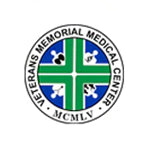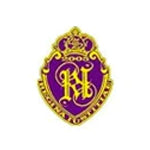Why do nurses wear pink dresses?
Pink has become a quiet powerhouse in modern healthcare uniforms. Beyond looking warm and approachable, pink communicates care, reduces anxiety, and helps teams stand out without shouting for attention. Here’s why many hospitals, clinics, and private practices are embracing pink nurse dresses—and how to do it right with quality, comfort, and brand consistency in mind.
The quick answer
Nurses wear pink dresses because the color signals compassion and calm, improves patient perception and trust, creates clear role recognition on busy floors, and supports brand identity. When crafted with durable, professional materials and meticulous finishing, pink nurse dresses balance gentleness with authority—exactly what patient-facing roles require.
Why pink works in healthcare
1) It puts patients at ease.
Soft hues like blush and rose feel friendly and non-threatening. That matters in pediatric wards, maternity units, ambulatory care, and any setting where reassurance is part of the job.
2) It sharpens role recognition.
Distinct color coding keeps teams coordinated. Pink dresses can instantly identify bedside nursing staff versus admin or ancillary teams—speeding up communication during rounds and emergencies.
3) It carries a message of care.
Hospitals often use pink during breast-cancer initiatives or women’s health campaigns. A consistent pink uniform reinforces advocacy and support, not just for a month—but year-round.
4) It balances warmth with professionalism.
The right fabric weight, structured seams, and crisp embroidery prevent pink from reading “casual.” Good construction turns a gentle color into a polished uniform.
5) It photographs well.
From onboarding IDs to hospital socials, pink uniforms look clean and high-contrast on camera—useful for brand storytelling and patient education materials.
Where pink nurse dresses shine most
-
Pediatrics & NICU: Gentle tones comfort young patients and worried parents.
-
OB-GYN & maternity: Aligns with the service line while projecting warmth.
-
Outpatient clinics: Differentiates care teams from reception or diagnostics.
-
Private practices & home care: Humanizes care in intimate settings.
Choosing the right shade of pink
-
Blush / Dusty Pink: Subtle, elegant, and easy to standardize across batches.
-
Rose / Mauve: More depth; reads professional on camera and in bright lighting.
-
Peony / Fuchsia accents: Best as trims or piping for a modern pop without overpowering.
Tip: Standardize a Pantone or fabric swatch early, so every re-order matches perfectly.
Dress vs. scrubs: what to consider
-
Freedom to move: Look for action pleats, side slits, and slight stretch so bending, reaching, and charting feel effortless.
-
Pockets that work: Deep hip pockets, a discreet chest pocket, and safe spaces for pens, alcohol swabs, and a small notepad.
-
Necklines that stay put: Modest V or square necklines maintain coverage during busy shifts.
-
Length & lining: Knee-skimming hemlines with a stable knit or lightweight lining prevent cling and see-through under strong lights.
Fabric and build quality matter
A color is only as good as the garment it’s on. Craft Clothing focuses on:
-
Colorfast fabrics that stay vibrant after routine machine washes.
-
Breathable blends (high-rate cotton weaves and performance synthetics) that feel light, wick moisture, and hold structure throughout long shifts.
-
Reinforced seams & bartacks at high-stress points (pockets, side vents, belt loops if any).
-
Embroidery that lasts so logos and name tags don’t crack or peel.
Customization that elevates your team
Bring your identity to life while keeping the line professional:
-
Embroidery: Hospital crest, department name, and individual names for accountability.
-
Piping & panels: Contrast trims on collars, sleeves, or pockets to create a signature look.
-
Role tags: “RN,” “Charge Nurse,” “LPN,” or “Head Midwife” badges for quick visual cues.
-
Inclusive sizing: Full size runs and adjusted patterns so everyone gets a flattering, consistent fit.
Care tips to keep pink pristine
-
Separate lights, wash cool, and avoid harsh bleach that can dull pink tones.
-
Turn garments inside-out before washing to protect embroidery and surface finish.
-
Use gentle spin and hang dry or low tumble to preserve structure and length.
-
Keep a small stain-treatment pen at the station for quick mishaps.
FAQs about pink nurse uniforms
Will pink look “less authoritative”?
Not when the dress is well-made. Structure, crisp stitching, and professional labeling give authority—pink simply adds warmth.
Is pink only for women’s uniforms?
Pink is a brand color, not a gender cue. Many teams use coordinated pink accents (piping, panels, ID trims) across all roles for unity.
Can we mix dresses and scrubs?
Absolutely. Many facilities set pink as the department color, then allow staff to choose dresses, tunics, or scrub sets so long as the palette and trims match.
Bring your Pink Uniforms vision to life
If you’re exploring a pink line for your ward or practice, we’ll help you lock in the perfect shade, fabric, and finishing details—then keep re-orders consistent for years. See how we approach design, fit, and long-wear construction here: Pink Uniforms.
At Craft Clothing, we’re proudly Manila-based artisans who obsess over the little things—from fabric selection and pattern fit to embroidery that endures countless washes. Share your concept, and we’ll craft free digital mockups, guide you on materials, and produce pink nurse dresses that feel as good as they look—so your team can focus on what matters most: exceptional patient care.
Let’s start creating. Send your vision to sales@craftclothing.ph and we’ll help you build Pink Uniforms that your patients recognize—and your nurses love to wear.
























































































































































